An industrial heritage
- 29th October 2025
In exploring his family’s history, using the 1921 census, Adrian discovers a number of links between both sides of his family.
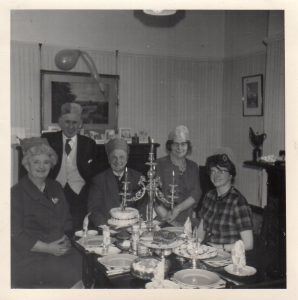
A family get together that included both sets of my grandparents dated around 1962. Copyright the Gregson family.
All of my family two generations back worked in industry – shipyards, cotton, building trade and railways. My grandma Dorothy was born in 1903 and we had her 100th party in 2003! In 1921 Grandma was living in Formby, with her father, Richard Erlam Greaves, a Railway Inspector on the Canada Dock, sister Hilda, and step-brother Lance. Dorothy was a milliner’s assistant to Miss Clara Steel in Anfield, but I also know that Clara Steel (then Greaves) died in 1920, leaving Richard a widower for a second time, and Lance, born in 1914, motherless. Dorothy and Hilda had lost their mother Emily in 1910 and brother Erlam (subject of a fascinating book, From Docks and Sand Helion pub. 2018) was killed in April 1918.
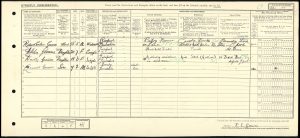
Crown copyright
Before marrying Dorothy, James Gregson, was an iron turner for engineering company, Bentley and Jackson. Born in Allonby where his mother ran a hotel on the coast, Jim had grown up with four sisters and worked with his father, Robert, in his joinery and undertaking business, and at Vulcan Engineering in Southport. He lost his eye in a work accident and with no compensation he lost his apprenticeship and had to leave home to find work in London.
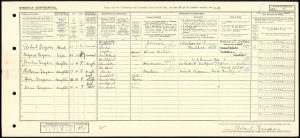
An entry from the 1921 census dhowing James Gregson living with his father Robert.
Crown copyright.
I don’t have so many memories of my mum’s father – he died when I was young. My grandfather James Barber had an identical brother called Joe. I have discovered that the Barbers were a musical family. My great grandfather Joseph Emmanuel Barber was a conductor of local bands and orchestras, when he wasn’t working in the cotton mill. James was a violinist and his marriage certificate calls him a musician. Joseph Emmanuel led the River Etherow Orchestra raising funds in the local area during the First World War.
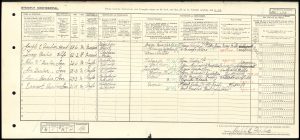
The Barber Family in Hadfield 1921 Census.
Crown copyright.
The Censuses tell us that on both sides my grandparents all worked in cotton. They were cotton bleachers, woollen cloth weavers, winders, spinners and piecers. Lucy was a cotton weaver. In 1921 Joe junior was at the Hadfield Mill, owned by Thomas Rhodes & Sons who, in 1891, had 75,000 spindles and 1,300 looms in Hadfield. James was still at HM Munitions Factory on the Waterside which had manufactured gun cotton during the War.
My maternal grandmother Agnes Pollock Cochrane Linn was born in Govan, like her two brothers Jim and George. In the 1921 Census, the brothers live in Barrow-in-Furness with parents, James Cochrane Linn and wife, Annie Dickie. But Aggie had to be tracked down to the Cumberland Infirmary in Carlisle, where she was a probationary nurse. On the same page is Janet Smith Wyllie, older by ten years, who proved to be a lifelong friend and my mother was named for her – Janet Wyllie Barber.
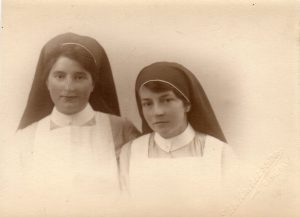
Lifelong friends from probationary nursing days Agnes Linn and Janet Wyllie c. 1922.
Copyright the Gregson family.
In 1921 Linn clan lived on Walney Island and worked at Vickers’ Shipbuilding. Matriarch Marion was surrounded by her sons, James a plumber, William and Archibald joiners and Alexander, sheet metal worker. Another son, Thomas, had emigrated to America in 1908 and lived in Boston until the War. Alexander and his family joined him for a time.
Archibald had lost his wife Isobel in 1914, and their daughter, also Isobel, was working as a ‘Lady facer’ in the shipyard. James’ son, Tommy Lynn, had been killed in 1915.
The 1921 census has given me insight into both sides of my family. It has not been an entirely easy process though! The Census can be challenging on spelling. Linn and Lynn are notoriously interchangeable, not only by officialdom but sometimes by the family itself. I’ve found the name recorded as Linn, Lynn, Lim, Lunn, and even Levin. All part of the fun!
Post a Comment